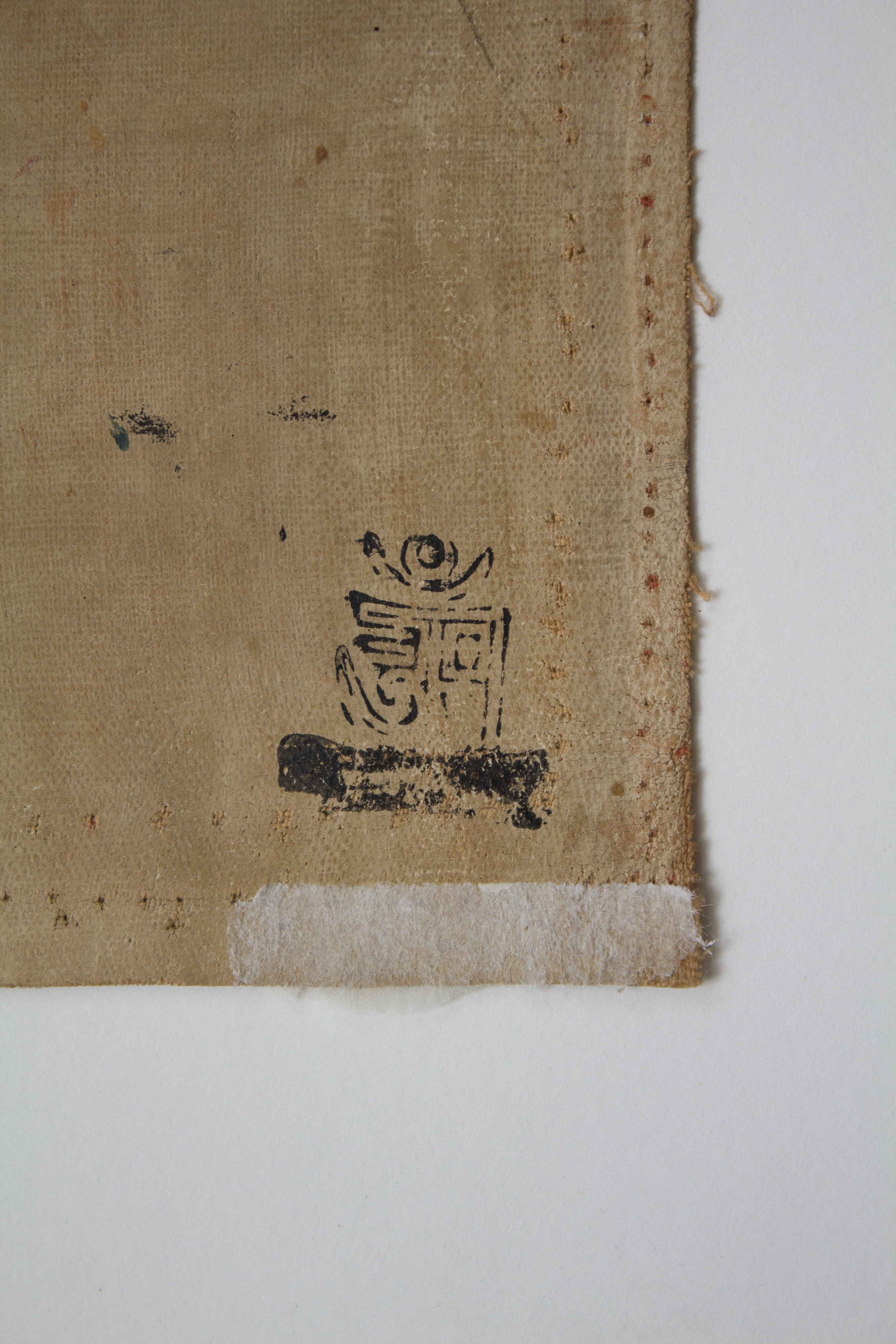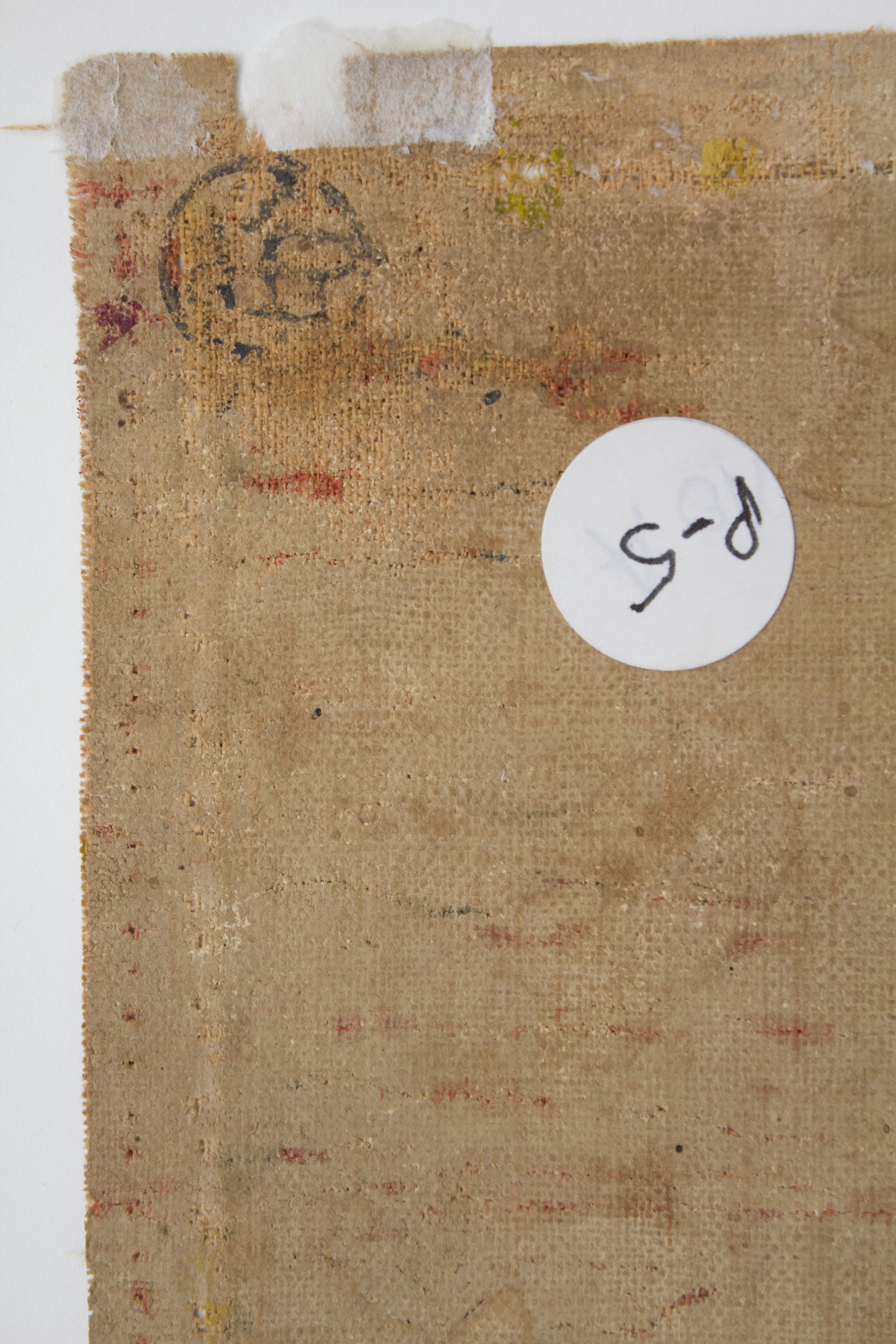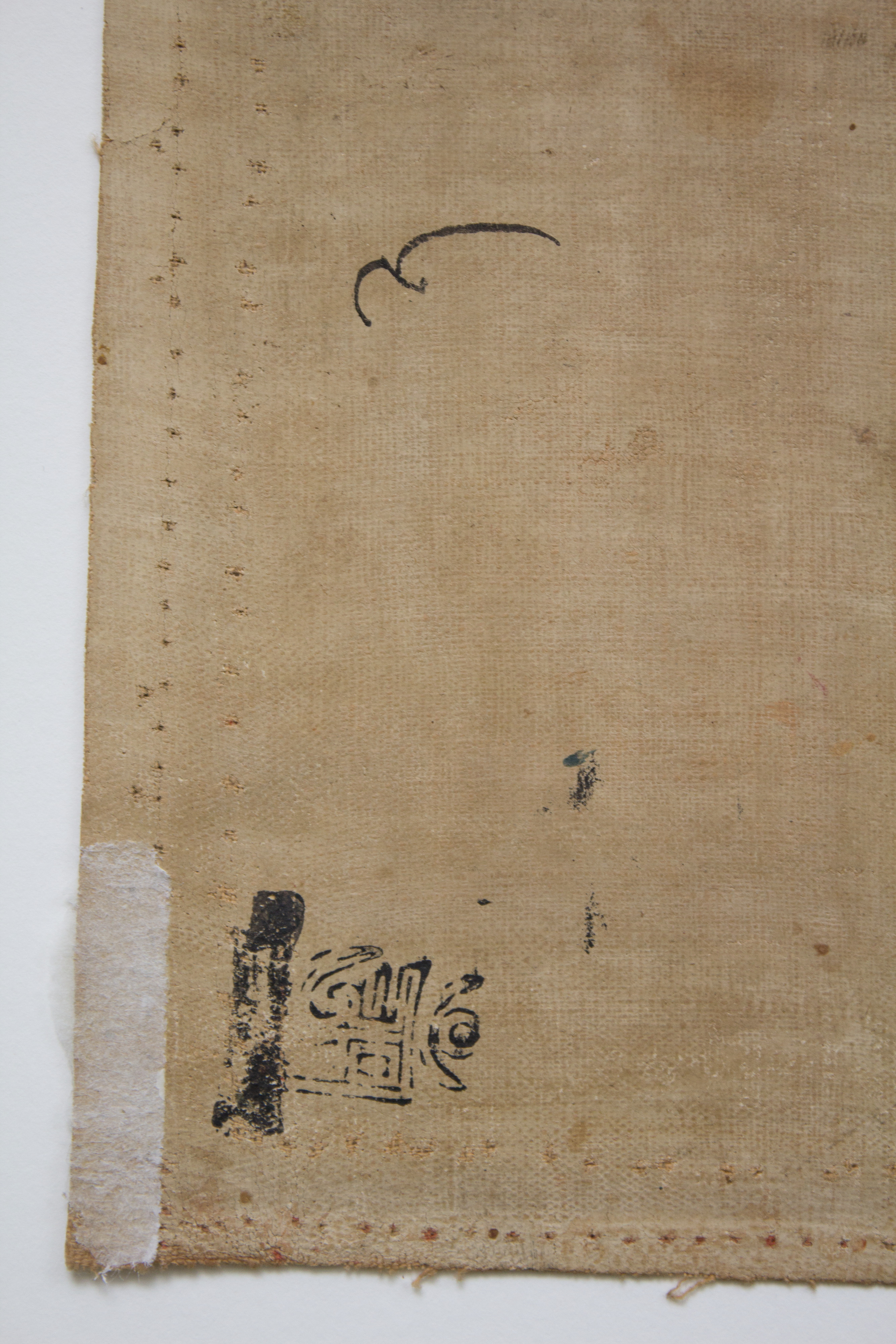Hevajra Mandala
Not on view
Hevajra appears here in his three-headed and four-armed form. This manifestation is drawn from the Hevajra Tantra, a text revered by the Sakya order of Tibetan Buddhism, who likely commissioned this painting from a Newari artist from Nepal. Hevajra and his consort Nairatmya dance at the intersection of four vajra gateways, indicating their position at the center of the cosmos. His name is composed of two syllables: “he,” compassion, representing the male aspect, and “vajra,” wisdom, the female aspect, which together offer the path beyond this illusory world. The repeating skull symbolism references the impermanence of all phenomena. Beyond the celestial palace are the eight great charnel grounds, each presided over by a yogic master, or mahasiddha. On the reverse, in an ornate Tibetan lantsa script, are the Sanskrit mantra oh ah hum and mantra syllables configured in a stupa silhouette.
Due to rights restrictions, this image cannot be enlarged, viewed at full screen, or downloaded.
This artwork is meant to be viewed from right to left. Scroll left to view more.






